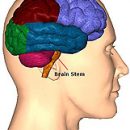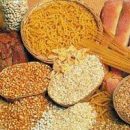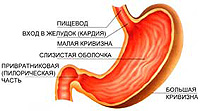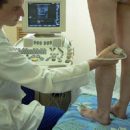Human intestine is a special world inhabited by many «Good and bad» Microorganisms. What happens if dysbacteriosis and «Bad» Bacteria won «Good»? What is dangerous dysbacteriosis and how to detect it? About this in the article.
Content
- Dysbacteriosis in scientific
- Causes of dysbacteriosis
- Why the intestine microbes?
- Consequences of dysbacteriosis
- How to identify dibacteriosis?
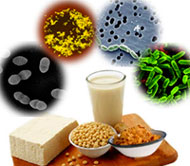
Intestine man — This is a special world inhabited by various
microorganisms, each of which performs its functions. In this micrometer,
As in the human macromir, there are «Good and bad», and peace and well-being
achieved when «The first hold under the control of the second», Not allowing
violate the established order and lead destructive war. State «Imposed»
in the intestine microworld when «Power goes to the villains», Doctors call
Dysbacteriosis.
Dysbacteriosis in scientific
Dysbacteriosis is not defined as a separate disease, it is
a state that can accompany many gastrointestinal diseases
tract.
According to order
Ministry of Health of the Russian Federation № 231 from 9.06.2003, intestinal dysbiosis is classified
how «Laboratory-clinical syndrome characterized by change
high quality and / or quantitative composition of normal microorganisms,
the transition of their various species in the unusual state and their excessive growth,
Metabolic and immunological disorders, as well as part of patients
accompanied by clinical symptoms of intestinal lesions».
The most famous representatives of normal microflora
human intestines are lactobacillia and bifidobacteria. In addition to this B
intestines dwell intestinal sticks, streptococci, enterococci, mushrooms and others
Microorganisms. The microflora composition is clearly balanced in quality and quantity,
Violation of this equilibrium entails the development of a number of painful states, starting
From banal discomfort in the abdomen, to severe oncological diseases.
Causes of dysbacteriosis
- Antibacterial therapy.
- Intestinal infections.
- Intestinal parasites.
- Strict diets and starvation.
- Fascination with enema and hydrocolonotherapy.
- Abuse of laxatives.
- Frequent orders.
- Alcoholism, addiction, smoking.
- Chronic stress.
-
Reception of drugs overwhelming immunity,
non-steroidal anti-inflammatory drugs, choleretic, narcotic and locally
anesthetics. - Operations on the intestines.
Why the intestine microbes?
It is important to understand that the intestinal microflora — this is not a cluster of parasites,
A person friendly community performing a number of significant functions.
The intestine microflora takes part in metabolic processes:
- in the digestion and splitting of proteins, fats and carbohydrates;
-
Enhances the enzymatic functions of digestive
glands; - regulates cholesterol in blood;
- in the metabolism of bile acids;
-
synthesizes vitamins B, k, s, e, participate in
Synthesis of steroids, biogenic amines, gamma-aminobacing acid; -
contributes to the absorption of calcium, vitamin d and
gland.
«Good» Microorganisms in digestive cam participate in
formation of immunity and protect a person from infections and oncological
Diseases.
-
Neutralize toxic substances penetrating
In the outside and the resulting metabolism. -
Stimulate local immunity and oppose
Intestinal infections. -
Produce substances that provide
Antitumor action. -
Brokes the reproduction of herpes virus and
Cytomegalovirus. -
Microbiocenosis of the intestine is necessary for
Normal blood circulation and reduction of the mucous.
Considering the functions «Useful» microorganisms in the intestine, easy
submit what happens when pathogenic microbes come to replace them.
Consequences of dysbacteriosis
 Disorder of digestion and violation of exchange
Disorder of digestion and violation of exchange
Processes. First of all, this is expressed in increasing body weight up to
Morbid obesity.- Decline in immunity high
predisposition to ORVI and other infections, high risk of developing them
Complications. - Disturbance of gallway exchange and development
Gallgamed disease. - Increased liver detox load
and kidneys, general poisoning of the body, which is reflected in the work of the central
nervous system, manifests general weakness, headaches, drowsiness and
Reduced performance. - Violation of the liver and synthesis of vitamins
leads to the development of anemia, breach of blood clotting. - Reducing the protective function of the intestine contributes
Development of allergic diseases. - Slowing down regenerative processes in digestive
The tract leads to the development of gastritis, duodenitis, ulcer of the stomach and
duodenal intestine, colitis and other diseases. - The absence of oncoprotective action leads to
Increase risk of breast cancer, stomach, colon. - Pathology of steroid exchange leads to violation
The synthesis of sex hormones that women are fraught with dysmenorrhea, in men — decline
Testosterone level and loosening potency.
How to identify dibacteriosis?
The presence of dysbacteriosis is evidenced by the development
Enclosed fermentation processes in the intestine manifested by the smell of mouth,
nausea, belching, swollen and yarring in the abdomen, intestinal colic, unstable
Chair and highlighting a large amount of gases. Cal under dysbacteriosis becomes
Cashitz-shaped, with an admixture of solid particles and mucus with an acidic or rotten smell.
Violation of metabolism and immunity is reflected in the set
weight, increase or decrease the function of the sebaceous glands, the appearance of mine
Skin diseases. Hypovitaminosis leads to the appearance of snacks, dryness and falling
hair, thinning and fragility of nails.
Incication becomes the cause of unmotivated weakness,
irritability, reduced performance.
The most important diagnostic method of dysbacteriosis is
bacteriological analysis of the feces that allows you to clarify quantitative and
Quality composition of intestinal microflora. To establish a degree of violation
digestion conduct a coprological study to identify diseases
Gastrointestinal tract appointed gastroscopy, irrigoscopy,
RectorOnoscopy, colonoscopy.

